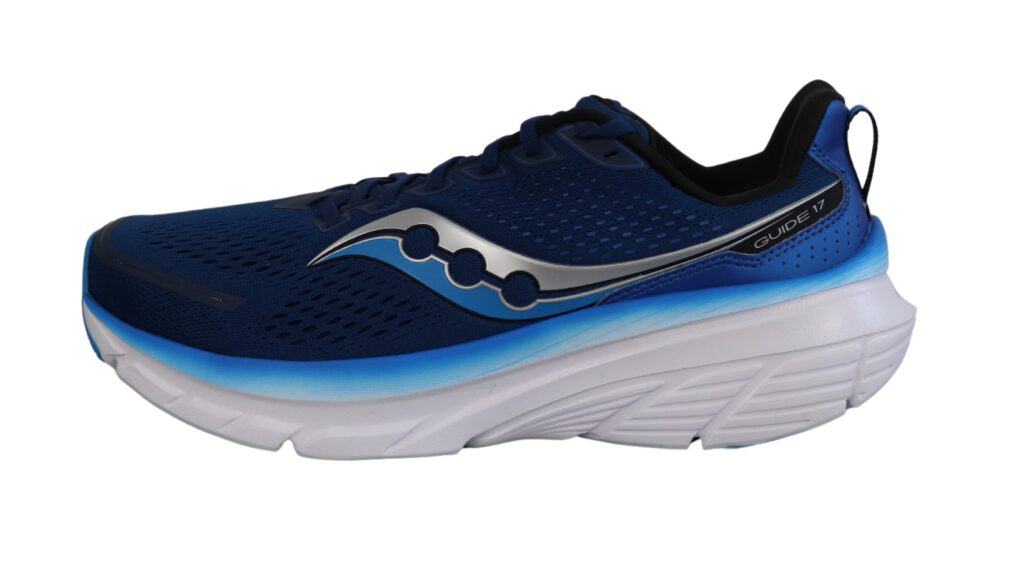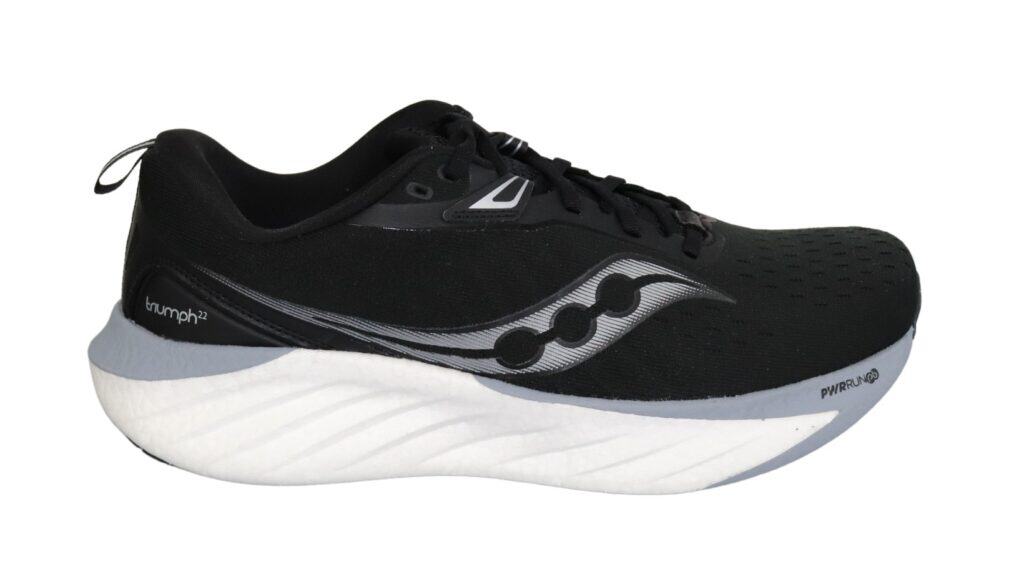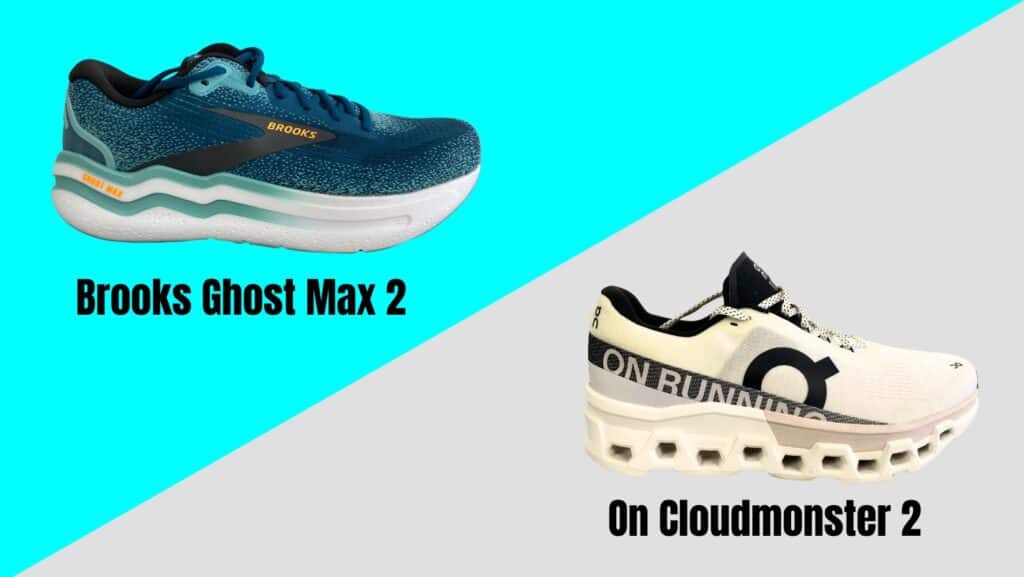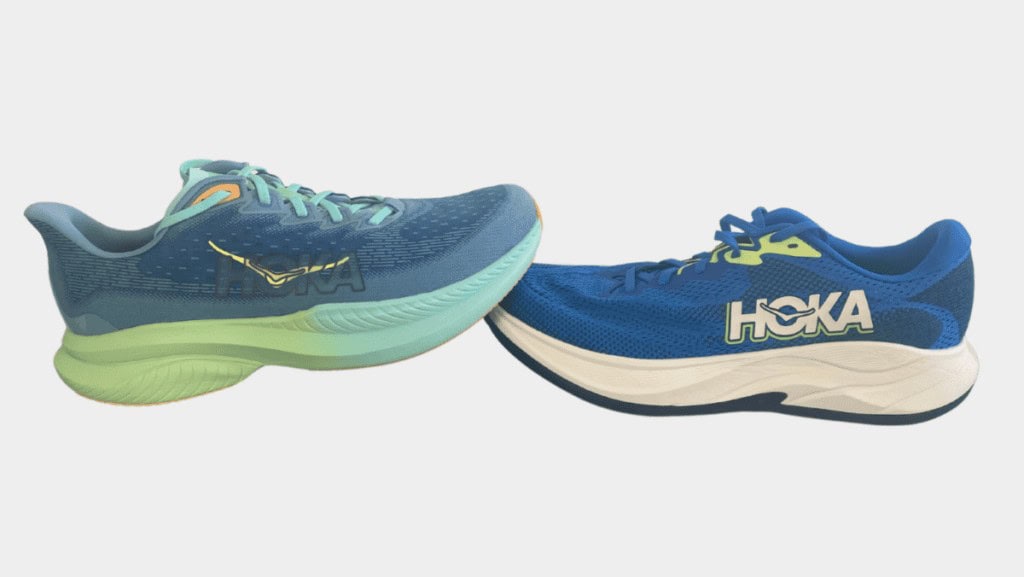Today, we will discuss the best Saucony shoes for walking: the Saucony Guide 17, the Ride 17, and the Triumph 22. Each shoe has different features in terms of cushioning, stability, fit, and support, and we’ll break down each one so you can decide which shoe might work best for you.
Stability
The first thing we will discuss is stability, so the most stable of the 2 shoes is the Guide 17. It provides stability in a different way than it used to in the previous models, as it has built-in side walls, so along the shoe, it has side walls that are raised up slightly like what you’d see in a bowling alley. The side walls are built up all the way, so on the outside of the shoe and the inside, but on the inside of the shoe, they go all the way up to the forefoot, so towards the big toe, rather than just to the midfoot on the outer side. So, it supports your foot and reduces the motion that can move inward if you struggle with excess pronation moments; then, it helps reduce that moment where possible.
The next way that the shoe gives extra stability is that it has a wide base, which gives you an extra base of support that keeps the foot more stable and has a little bit of sole flare, so that’s where the sole of the shoe flares outward again providing an extra bit stability, especially in the forefoot. Hence, you got the extra bit of posting on the forefoot, along with the extra bit of sole flair. Historically, this is what we consider a stable neutral shoe; in a stability shoe, you might have a tilt on it. Most shoes have moved away from that and try to provide geometric stability instead.
Then, regarding the Saucony Ride 17, we classify it as a classic neutral shoe, as is the Triumph 22. They have some elements of stability, which we’ll touch on. For example, they’ve got a wide base as well, so you can see that it’s wider than the forefoot, which helps to give you an extra bit of stability. A wide base isn’t as present on the Triumph, so it’s really a classic neutral shoe. The geometry within the shoe gives you a little stability, but ultimately, it is a typical neutral shoe.

Cushioning
There are different types of cushioning within each shoe. I will run a breakdown of how that feels when you walk. Again, the Guide 17 has Saucony’s typical PWR Run cushioning, which makes it a nice, compliant shoe. It has a little resilience, so it gives you some feedback when you put pressure on it. Ultimately, however, it’s more of a comfort shoe. When you’re walking, it feels very comfortable and really stable. It doesn’t give you a lot of pushback, but it’s more focused on comfort and stability.
In contrast, you’ve got the Saucony Ride 17, which is more of an uptempo shoe. It has the PWR Run+ cushioning, which is a new form of cushioning offered by Saucony. As a result, the shoe is a lot more resilient, which means cushioning, which is when you apply pressure to it, pushes you back, giving you that element of spring. If you’re a quicker walker, you’ll enjoy this as it pushes you forward. It’s really nice, very comfortable and a really uptempo shoe.
The Triumph 22 has a different type of cushioning. It’s the PWR Run PB, which is a really compliant type of cushioning, so it’s really soft, and it feels like you’re walking on a cloud. If you’re looking for a shoe that’s really cushioned and really soft, that’s neutral, then you’d look at the Triumph 22.

Specifications
Regarding the stack and the important drop, the stack refers to the amount of cushioning in the midsole; the Triumph 22 has 40mm on the rearfoot and 30mm on the forefoot, providing a 10mm drop. That’s really important as if you have any issues with your forefoot, it does tilt you forward slightly and can put more pressure on the forefoot when standing for long periods of time. The shoe makes up for it with lots of padding under the forefoot, so it’s super cushioned. The only thing we’d say about a neutral shoe with lots of cushioning is that it can make the shoe a bit more unstable. So, if you have a history of rolling your ankle innocuously and tripping up, you might find you’re a bit more unsteady on your feet with something like this. If you’ve no history of instability and you like loads of cushioning packed in and lots of softness, this is excellent for you.
Then you’ve got the Ride 17, which has 35mm at the rearfoot and 27mm at the forefoot, giving you an 8mm drop. So, this shoe has a slightly lower amount of cushioning, and you can feel it because it is a lot softer. So, if you want a shoe that’s still packed with cushioning, neutral with some elements of stability, and quite responsive, then you look at the Ride 17.

The Guide 17 has 25mm at the rearfoot and 29mm at the forefoot, giving you a 5mm drop, making it the lowest drop of the models, and that’s quite rare in a stability shoe. The only other brands that really compare to that is the Hoka Arahi 7. So you’ve got lots of cushion in this, lots of elements that give you stability, it’s got a low heel drop, so it’s an excellent all-round shoe and a shoe that we’d recommend to those that are looking for a little bit of extra stability but still have a really comfortable shoe. If you have any questions about any of these shoes, please leave them in the comment section below.


